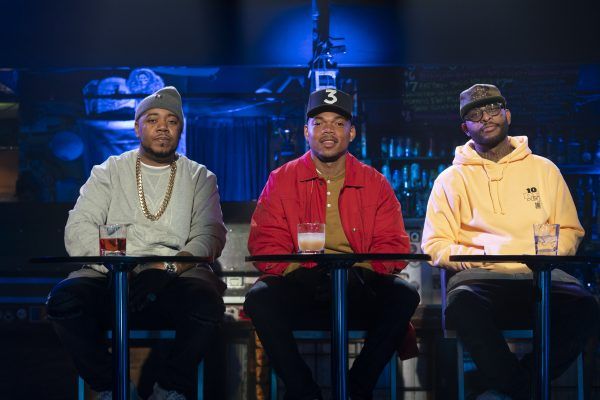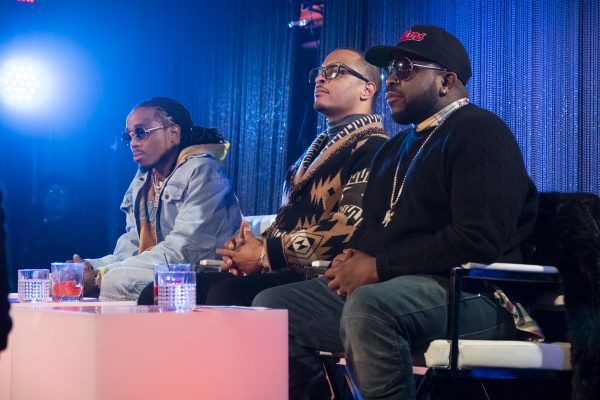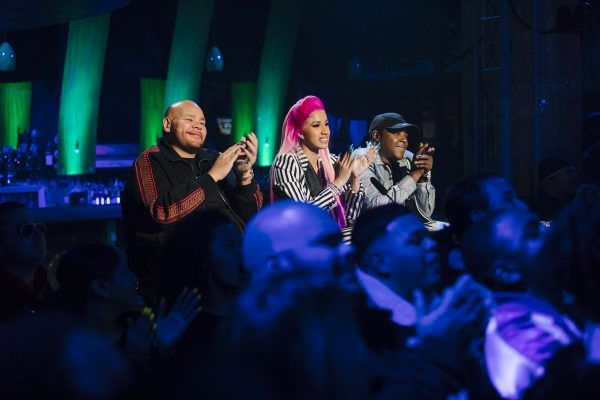If you’re into hip-hop, you must watch Rhythm + Flow. It’s as simple as that. Netflix’s new hip-hop talent competition reality show is pure catnip for hip-hop heads. From the murderer’s row of established talent working as judges, to the relatable conversations the would-be superstars have (you’ve definitely debated who the greatest rappers are with your friends, and you will shout at the TV when they do), Rhythm + Flow is an impeccably constructed, refreshingly unsanitized contribution to hip-hop culture. Are you not as plugged into hip-hop? Watch anyway. You’ll still find something to flow with.
The formula for Rhythm + Flow is, in some ways, well-tread territory. While guest judge Snoop Dogg announces “This ain’t The Voice, motherfucker” within minutes of the first episode, folks familiar with The Voice, or any other talent-based reality show, will find familiarity in Rhythm + Flow’s formula. Contestants appear before regular judges T.I., Chance the Rapper, Cardi B, and an onslaught of dope guest judges to show off their sweetest 16s, stickiest hooks, and illest stage presence. We also get slices of each contestant’s personal life and struggles, expanding the “narrative scope” beyond the stage. Finally, our esteemed judges confer, offer words of encouragement (and sometimes Simon Cowell-esque barbs), and either send the contestants to the next round or back home. So far, these rhythms sound like beats you’ve heard a hundred times before. But where the show excels beyond its competition is in its execution.
Most of the network competition reality shows feel airbrushed to an inch of their lives. They’re brightly, flatly lit, cutting haphazardly to obtrusive reaction shots, and narrowing down complicated issues into palatable puzzle pieces. Rhythm + Flow does something different. From a formal standpoint, the show looks handsome. The first four episodes take place in different cities -- episode one starts in Hollywood, and then we move to each judge’s home city (New York for Cardi, Atlanta for T.I., Chicago for Chance). All of these episodes feel stylistically different, and huge props must be given to the production team for giving the often rudimentary genre of reality TV a nice prestige polish. Performances on the Atlanta stage feel fundamentally different from performances on the Chicago stage, from lighting to editing. Hip-hop has always been as much about visual storytelling as knockin’ beats and cold flows -- Rhythm + Flow understands and communicates it all with incredible prowess.
But how are the contestants, anyway? Unlike an American Idol, which luxuriates in the schadenfreude of watching haplessly untalented folks get lambasted and laughed it, pretty much every competitor on Rhythm + Flow has a baseline of competence. Every episode features one quick-cut montage of the “not so great” contestants (which just might make watching with subtitles worth it to see how their unintelligible lyrics are written), but you can tell it’s not the main focus of the producers or the judges. Even particularly eccentric contestants, like a baby-head-on-a-chain wearing horrorcore Tyler, the Creator wannabe, are given patient, insightful pieces of advice (“You’re doing a disservice at trying to appeal to everyone. Just be yourself,” offers Royce da 5'9" to this particular cat). There’s no William Hungs on this show -- everyone is too interested in making great art and lifting each other up. And when a truly incredible performer takes that stage and commands the audience and judges’ attention -- wow does it feel electric. One performer named Old Man Saxon comes on stage in a suit and an atypically goofy attitude. Uh-oh, are we about to watch a trainwreck? Nope -- once this guy starts flowing, he owns that stage, makes your head nod, and lowkey becomes your new favorite rapper. Rhythm + Flow is chock-full of unquestionably enthralling moments like these.
The show also works as a perfect accessibility point for folks who aren’t as inherently into hip-hop by communicating, with enrapturing clarity, what hip-hop means to its participants. Its famous judges speak eloquently and passionately about the importance of lifting up struggling folks from their hometown and communities, and the show highlights this triumphant/bittersweet goal. Rap is often unfairly maligned as a genre of unrepentant violence and shallow pleasures. Rhythm + Flow puts these gross stereotypes to bed, not just in Chance’s routine criticism of performers who resort to empty violence, but in his passionate editorialization on the importance of free library programs for young, burgeoning artists who would otherwise never have these kinds of opportunities. In the very first episode, T.I. meets up with the late, great Nipsey Hussle, who used his fame and influence to help positively impact folks in his community, and the two heavyweights watch young performers handpicked by Hussle together. It’s beautiful, impactful storytelling -- one shadowed by tragedy given Hussle’s unfair fate.
A howling, indignant, inherently American melancholy radiates at the core of Rhythm + Flow. For the contestants, this isn’t just about rapping well. The stakes between moving on in the competition and staying put are the differences between life and death. “I lost too many people to just be sitting around and waiting,” states one contestant, with equal parts hardened professionalism and uncontrolled vulnerability. Rhythm + Flow highlights the voices of folks who do not normally get voices in America -- or worse, whose voices are abruptly cut short. These voices offer such engaging, interesting perspectives -- from the gay male rapper Cakes Da Killa who’s fighting against his community’s homophobia, to the female slam poetry-tinged Big Mouf’Bo who raps for her late mother -- and it all offers an atypically deep reality TV viewing experience. In other words, Rhythm + Flow offers actual “reality.”
Are there any flaws in Rhythm + Flow? On occasion. It’s dispiriting to see Fat Joe offer an inclusive message about hip-hop’s ability to welcome all kinds of performers before making an ugly, borderline transphobic joke about one contestant. But even these crunchy moments feel necessary, showing the hard-to-reach stepping stones Americans still have to take for true visibility and progressivism. Overall, Rhythm + Flow is an essential watch, offering catchy vibrancy for the hip-hop heads, and incisive representations for everyone.
Grade: ★★★★★




